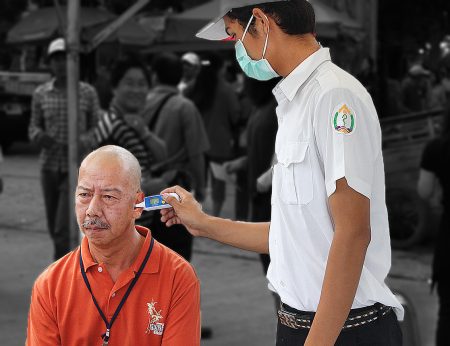As the Zika virus continues to expand through the Asean Community (AC) a new study from the Rockefeller University has found that the ‘Asian lineage’ of the Zika virus can infect brain cells in adult mice leading to cell death.
The study saw 5- to 6-week old mice infected with a 2010 Cambodian isolate of the Zika virus resulting in significant immunoreactivity in two regions of the brains of Zika infected adult mice that ordinarily maintain stem cell populations throughout adulthood.
While proving that the Asian Zika virus strain can infect the brain of adult mice and therefore potentially damage adult human brains, the authors urge caution.
“There are several caveats to our study”, they write, including use of a single viral strain, and a single strain of a specially type of mouse. The study also comprised only three Zika infected and three non-infected mice.
“The degree to which IFN-deficient mice model the extent and severity of flavivirus infection in humans is unknown.
“We recognise that healthy humans may be able to mount an effective antiviral response and prevent entry into the CNS [central nervous system], but it remains a possibility that some immunocompromised humans and even some apparently healthy humans may be susceptible in ways modelled by the TKO mice”, the researchers state.
Asean ramps up response to Zika virus

The publishing of the study in Cell Stem Cell comes as authorities throughout Asean ramp up their response to the increasing number of Zika cases being identified.
In Malaysia where at least four confirmed and a suspected 40 additional cases of Zika virus have been identified health officials have used heavy duty cutting equipment to force their way into locked apartments in search of mosquito breeding grounds.
At the same time a ministerial-level medical bio-ethics advisory board is being established to deal with the issue on termination of pregnancy for women infected by the Zika virus, while interstate bus operators have been instructed to spray buses with insecticide 30-minutes prior to departure.
Malaysia has also banned school trips to Singapore, site of Asean’s largest Zika virus outbreak with more than 330 confirmed cases, and to the Philippines where just six cases have been reported so far.
In neighbouring Thailand where 22 new cases of Zika virus were reported over the weekend, mostly in the Sathorn business district of Bangkok, the number of confirmed cases hit 117 for the year to date as authorities urged people to remain calm.
Government Spokesman Major-General Sansern Kaewkamnerd said the public should not panic over the spread of the Zika virus in Bangkok because there were only about 20 cases and infections were not fatal.
To help combat the spread of Zika the Bangkok Metropolitan Administration (BMA) has established ‘rapid-response mobile units’ and protocols for fumigating the area surrounding Zika virus outbreak clusters, as well as for monitoring those who fall ill.
Zika outbreak a $72 mln fail for Singapore

For Singapore, site of Asean’s largest Zika outbreak, the emergence of the flavivirus is somewhat of a blow to the island state’s mosquito education and prevention programme.
Last year the Singapore government spent more than S$72 million dollars on dengue fever – another flavivirus spread by the Aedes aegypti mosquito – research, and public education, only to see the number of Zika virus cases mushroom from zero to more than 300 in a little more than two weeks.
Despite aggressive vector control operations carried out by the Singapore Ministry of Health (MOH) and the National Environment Agency (NEA), new outbreak clusters continue to be reported.
The high number of cases in Singapore has resulted in the Philippines Department of Foreign Affairs (DFA) to warn its citizens traveling abroad to take extra precautions while staying in Zika affected countries. More than 180,000 Filipinos live in Singapore and construction workers who live in on-site dormitories are particularly vulnerable to the disease.
Across Asean thermal scanning stations have been implemented at international air, land, and sea entry points, including by Malaysia on the Johor Strait which see’s some 200,000 crossings daily.
First identified in Uganda in 1947, little attention has been paid to the Zika virus until July last year when Brazil, in the grips of a particularly large outbreak, reported an association between Zika virus infection and Guillain-Barré syndrome, a disorder in which the body’s immune system attacks part of the peripheral nervous system.
In October 2015 Brazil further reported an association between Zika virus infection and microcephaly, a birth defect where a baby’s head is smaller than expected when compared to babies of the same sex and age. According to one study the risk for microcephaly with Zika infections in the first trimester of pregnancy ranges from 1 per cent to 13 per cent.
Asian Zika virus more than 50-years-old
Late last week scientists in Singapore said that the outbreak there is a ‘Asian” variety that has already been circulating in Southeast Asia since a pandemic in the 1960s and not the same as that currently loose in Brazil.
Speculating that the effects might not be as sever as the Brazil strain, Singapore Health Minister Gan Kim Yong said last week that Singapore would no longer be isolating patients who have contracted the Zika virus “unless their condition is severe”, describing it as “no longer very effective”.
Although the effects of Zika are relatively mild for most people, several days of illness followed by full recovery, the Brazil study findings have caused a number of governments to issue travel warning for individual Asean nations, with little reasoning as to why certain countries have been subject to alerts and not others.
Despite the World Health Organization (WHO) saying there ought to be no general restrictions on travel and trade with countries where the Zika virus is being actively transmitted Australia, the UK, the US, and Taiwan have posted travel advisories for Singapore, while the European Centre for Disease Prevention and Control (ECDPC) warns about travel to Thailand, and Indonesia, but fails to mention the Philippines.
According to the the medical journal The Lancet Infectious Diseases China, India, Indonesia, the Philippines, and Thailand are all high-risk countries.
Asean-wide dengue outbreak dwarfs Zika

The Zika outbreak comes at the same time as Asean is experiencing a dramatic increase in another mosquito-born flavovirus, the potentially fatal dengue fever.
For the year to date Singapore has reported 9,641 cases of dengue fever, a little more than 86 per cent of the 11,200 cases recorded for all of last year. In Thailand health officials have recorded 25,037 dengue fever cases, including 20 deaths, in all 77 provinces, while in Malaysia 114 deaths and 65,600 dengue cases have been recorded, more than half in Selangor State.
In Vietnam the number of dengue fever cases is up more than 260 per cent year-on-year, with government data recording almost 45,000 cases for the year to date, almost 55 per cent of the 82,000 infections recorded for the entire 2015 year.
Tran Dac Phu from the General Department of Preventive Medicine recently told The Saigon Times Online that 14 people have died from dengue fever infections so far this, considerably fewer than the 52 who succumbed to the debilitating and sometimes fatal disease last year.
In Indonesia dengue fever killed 38 people in Bali in the first four months of the year compared 29 for the entire 2015, with almost 7,800 cases recorded compared to 10,700 for all of last year.
More than 84,000 cases of dengue were recorded in the Philippines between January 1 and August 6, an almost 16 per cent increase on the 72,627 cases recorded for the same period last year, with dengue related deaths up by more than 63 per cent from 228 to 372.
Protecting against Zika virus & dengue fever

Both dengue fever and the Zika virus are spread by the Aedes aegypti mosquito which is most active in the early morning and late afternoons. The symptoms for both diseases are similar – fever, an itchy rash, body aches, headache, red eyes and occasionally, nausea and vomiting.
However, while dengue can be identified using a simple instant blood test costing about $15, the test for the Zika virus is considerably more complex and time consuming, with tests costing up to $150.
People travelling to areas where active Zika virus or dengue fever transmissions have been reported should wear neutral-coloured (beige or light grey) long sleeve shirts and pants and cover exposed areas of skin with a repellent containing 20-30 per cent DEET or 20 per cent Picaridin.
Pregnant women or those who plan to become pregnant in the immediate future should rethink visiting countries where active ZIka virus transmission is occurring, and/ or should postpone pregnancy by at least two months after leaving.
Because the Zika virus can be transmitted sexually those living in or travelling to or from Zika infection zones are urged to practice safe sex for at least eight weeks after their return home, even if they don’t have symptoms. Men who experience Zika virus symptoms should employ safe sex practices for at least six months.
The WHO is forecasting up to four million cases of Zika virus this year globally, with all Asean countries expecting to see more cases. In Brazil more than 1,800 cases of microcephaly associated with the Zika virus have so far been recorded this year.
Update: This story was updated at 11.30am on September 14, 2016: This article was updated to reflect additional information contained in the video presentation of Dr John Bergma.
Feature video John Bergman
Feature photo Janet Stephens
Additional reporting by Vat Vin in Phnom Penh
Related:
- Why is Zika spreading so quickly in Singapore? (CNN)
- More Zika outbreaks, more travel advisories (The Straits Times)
- Authorities urge calm as 20 cases detected in Bangkok (The Nation)
- Thai authorities downplay Zika risk, worried by tourism impact (Reuters)
- Too costly for Indonesia to thoroughly test for Zika: health official (Reuters)
John Le Fevre
He has spent extensive periods of time working in Africa and throughout Southeast Asia, with stints in the Middle East, the USA, and England.
He has covered major world events including Operation Desert Shield/ Storm, the 1991 pillage in Zaire, the 1994 Rwanda genocide, the 1999 East Timor independence unrest, the 2004 Asian tsunami, and the 2009, 2010, and 2014 Bangkok political protests.
In 1995 he was a Walkley Award finalist, the highest awards in Australian journalism, for his coverage of the 1995 Zaire (now Democratic Republic of Congo) Ebola outbreak.
Prior to AEC News Today he was the deputy editor and Thailand and Greater Mekong Sub-region editor for The Establishment Post, predecessor of Asean Today.
In the mid-80s and early 90s he owned JLF Promotions, the largest above and below the line marketing and PR firm servicing the high-technology industry in Australia. It was sold in 1995.
Latest posts by John Le Fevre (see all)
- COVID-19 in Asean: update for July 26 — 16 mln case barrier breached, Vietnam records community transmission – July 26, 2020
- COVID-19 in Asean: update for July 25 — new high for daily infections, 16 mln infection barrier to break today – July 25, 2020
- COVID-19 in Asean: update for July 24 — Asean tops 230,000 cases, nudges 90,000 active – July 24, 2020
- Thailand morning news for July 24 – July 24, 2020

